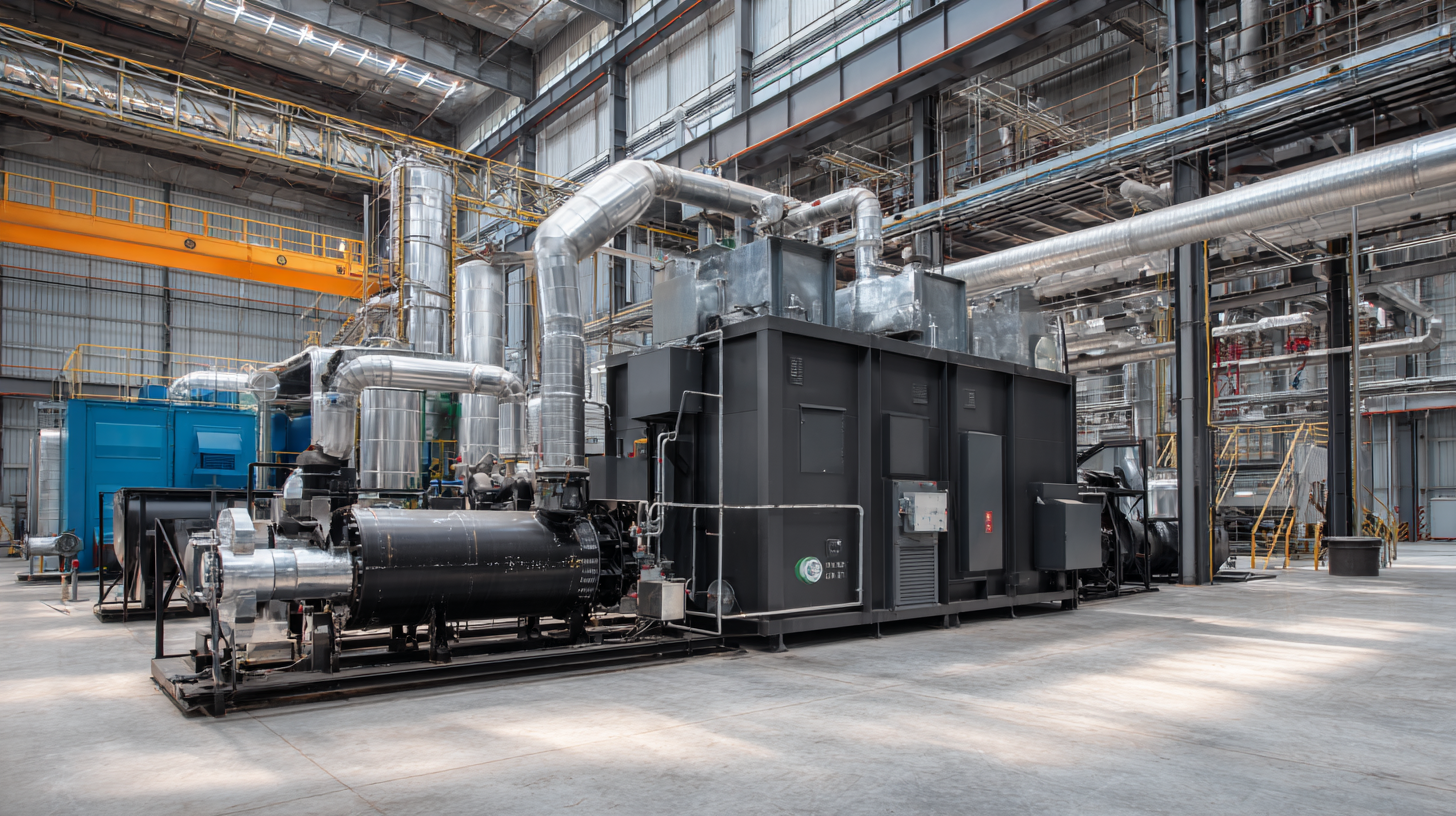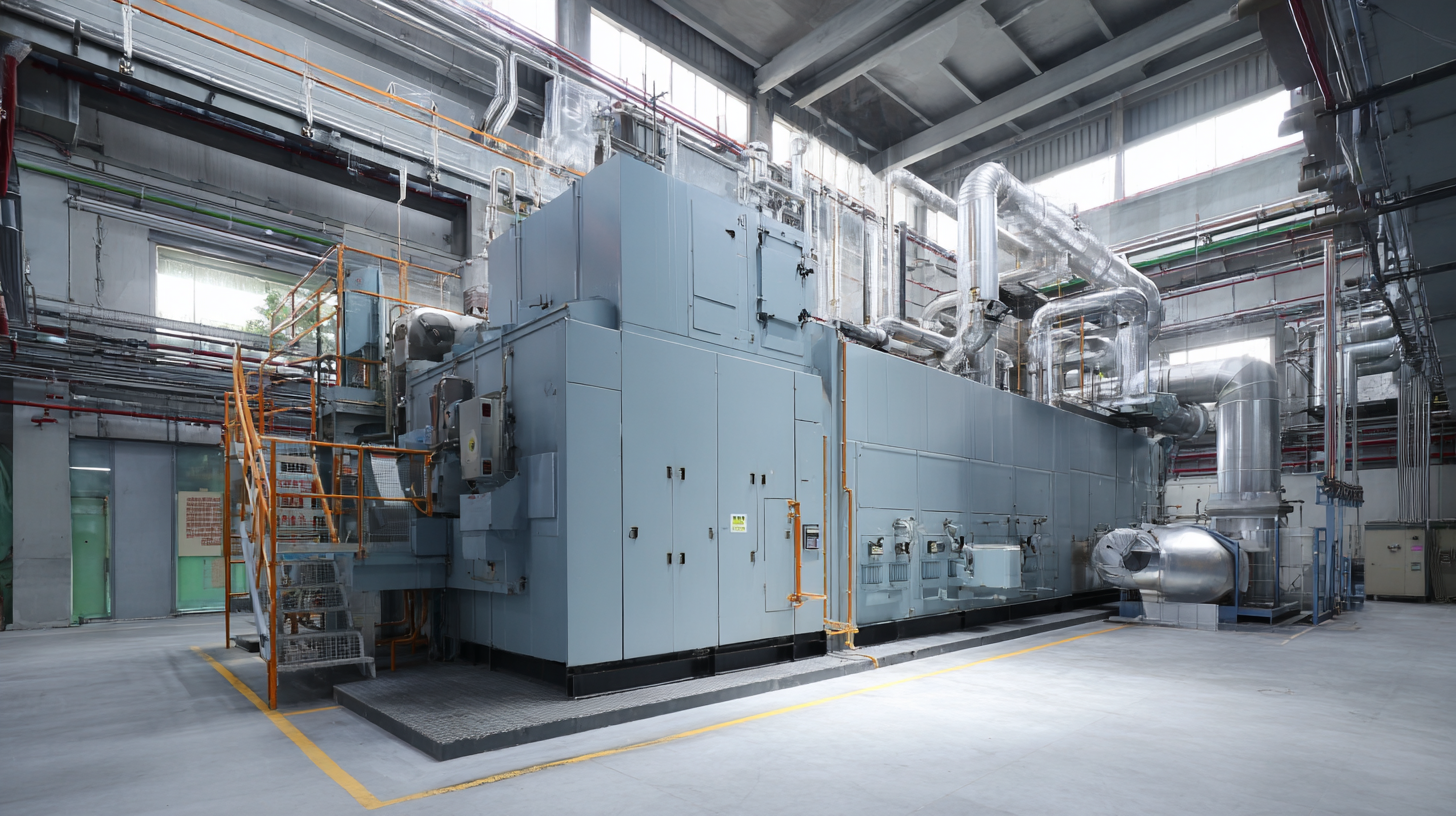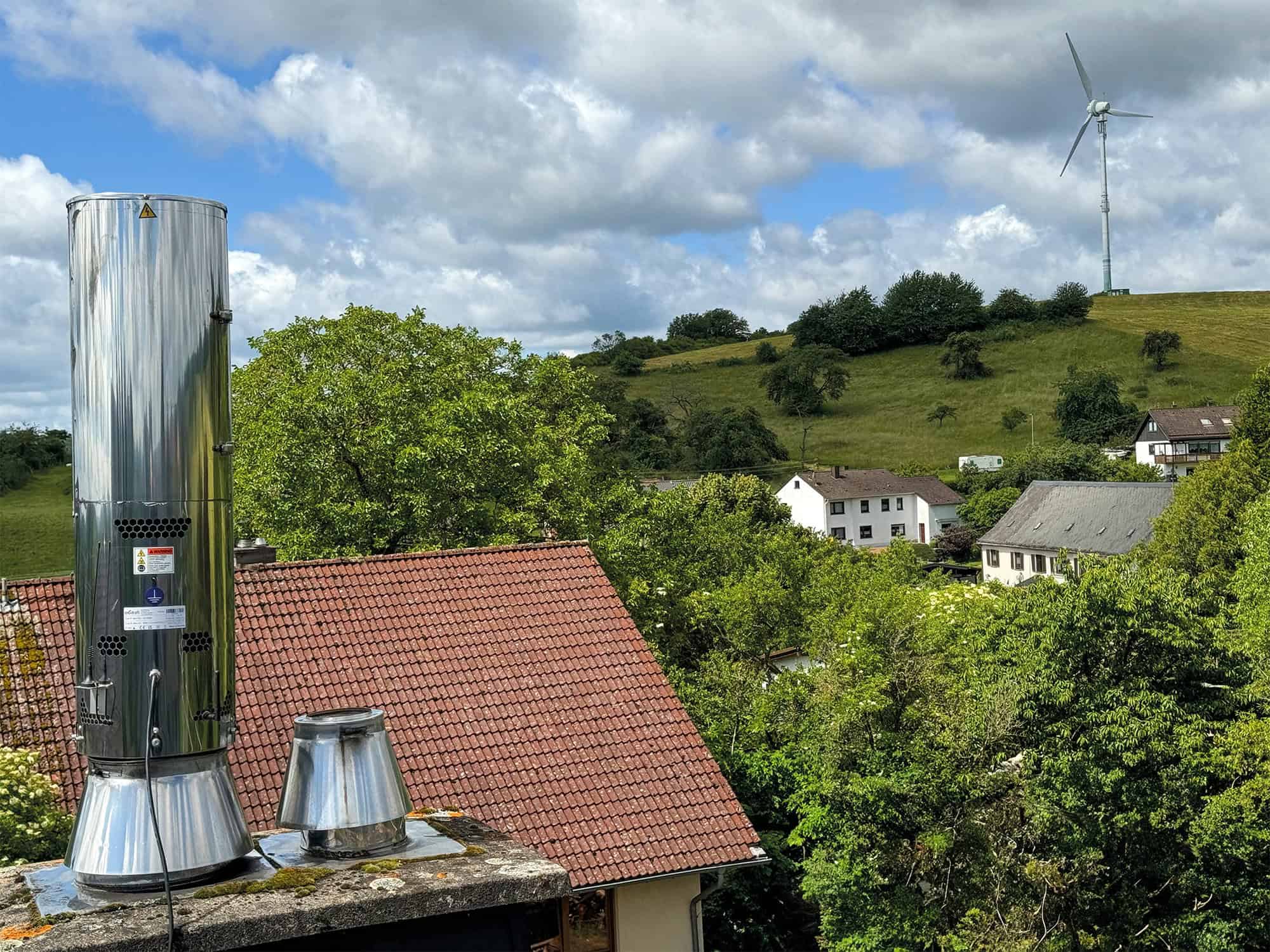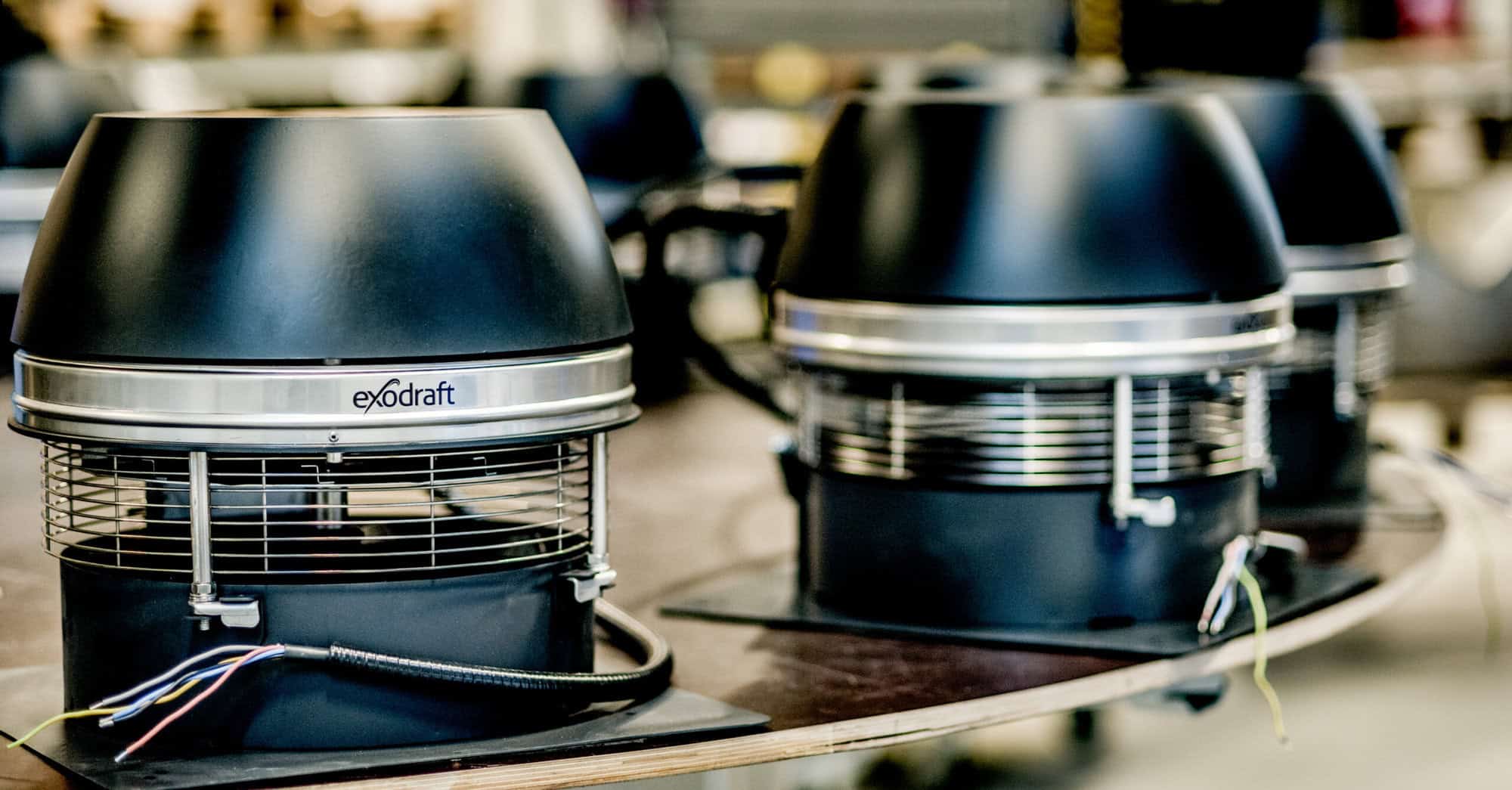
CAREER
Your career.
Optimized.
Join Exodraft and our shared
ambition to build the bridge to a CO₂-neutral
future with greener energy for everyone.
Unlocking Energy Efficiency: Innovative Waste Heat Recovery Solutions for Sustainable Industries
In today's rapidly evolving industrial landscape, the significance of energy efficiency cannot be overstated. As businesses strive to minimize their carbon footprint while enhancing operational performance, innovative solutions are emerging to harness untapped energy sources. One of the most promising methodologies is waste heat recovery, a process that captures and repurposes heat generated during various industrial processes.
 According to Dr. Emily Carter, a leading expert in the field of energy recovery technologies, “Effective waste heat recovery systems not only reduce energy consumption but also pave the way for a more sustainable future.”
According to Dr. Emily Carter, a leading expert in the field of energy recovery technologies, “Effective waste heat recovery systems not only reduce energy consumption but also pave the way for a more sustainable future.”
This perspective highlights the transformative potential of waste heat recovery, particularly in industries where energy costs are a significant concern. By implementing cutting-edge technologies that recover and utilize waste heat, companies can significantly reduce their energy expenditures and lessen their environmental impact.
As we delve into the top five innovative waste heat recovery solutions, it becomes clear that embracing these methods is not merely a strategic advantage but a necessary step towards sustainable industrial practices. The integration of waste heat recovery systems exemplifies how industries can lead the way in energy conservation while contributing to global sustainability efforts.
Innovative Technologies in Waste Heat Recovery Systems
The advancement of waste heat recovery systems has become crucial for promoting energy efficiency within industries. Innovative technologies are emerging that allow businesses to capture and repurpose excess heat generated during manufacturing processes. For instance, new heat exchangers and thermoelectric generators are designed to optimize heat transfer, enabling facilities to convert waste heat into usable energy. This not only reduces the overall energy consumption but also minimizes greenhouse gas emissions, making processes more sustainable.
Moreover, the integration of smart sensors and IoT-based monitoring systems enhances waste heat recovery by providing real-time data on temperature and energy flows. This information allows industries to fine-tune their operations and maximize recovery rates. Furthermore, advanced materials and techniques, such as phase change materials and nanofluids, are being utilized to improve the efficiency of heat transfer. By adopting these innovative technologies, industries can not only lower operational costs but also contribute to a more sustainable future.
Benefits of Implementing Waste Heat Recovery in Industries
 Implementing waste heat recovery systems in industries presents numerous benefits that contribute significantly to sustainability and energy efficiency. One of the primary advantages is the reduction of energy consumption. By capturing and reusing waste heat generated during manufacturing processes, companies can significantly lower their reliance on external energy sources. This not only decreases operational costs but also lessens the environmental impact associated with energy production.
Implementing waste heat recovery systems in industries presents numerous benefits that contribute significantly to sustainability and energy efficiency. One of the primary advantages is the reduction of energy consumption. By capturing and reusing waste heat generated during manufacturing processes, companies can significantly lower their reliance on external energy sources. This not only decreases operational costs but also lessens the environmental impact associated with energy production.
Additionally, waste heat recovery enhances the overall efficiency of industrial processes. By integrating these systems, industries can optimize their energy output, leading to improved productivity and reduced emissions. The recovered heat can be utilized for space heating, water heating, or even to drive additional processes, creating a closed-loop system that maximizes resource utilization. As industries aim to meet increasing regulatory pressures and consumer demand for sustainable practices, waste heat recovery serves as a valuable strategy for achieving long-term environmental and economic goals.
Case Studies of Successful Waste Heat Utilization
The increasing focus on sustainability in industries has led to innovative waste heat recovery solutions, which significantly enhance energy efficiency. In particular, case studies reveal the effectiveness of various approaches to waste heat utilization. For instance, a leading cement manufacturer implemented a system that captured waste heat from kiln operations, achieving an impressive reduction in energy consumption by approximately 15%. According to the International Energy Agency (IEA), industrial waste heat recovery can potentially provide up to 20% of the world's industrial energy use, a transformation that could result in substantial cost savings and lower greenhouse gas emissions.
Another notable case is the food processing industry, where a major company integrated a waste heat recovery system that repurposed excess heat from cooking processes into power for its operations. This initiative not only decreased their reliance on external energy sources but also minimized their carbon footprint. The U.S. Department of Energy (DOE) statistics indicate that food and beverage manufacturing alone accounts for nearly 15% of total U.S. industrial energy use, showcasing a significant opportunity for the adoption of waste heat recovery technologies to drive operational efficiency and sustainability. Such successful implementations highlight the critical role of innovative solutions in creating a more sustainable industrial landscape.

Challenges and Solutions in Waste Heat Recovery Adoption
The adoption of waste heat recovery (WHR) technologies presents both significant challenges and innovative solutions for industries aiming to enhance energy efficiency. A recent report by the International Energy Agency (IEA) indicates that approximately 20% of global industrial energy consumption is lost as waste heat, underscoring the need for effective recovery strategies. However, industries often face hurdles such as high initial investment costs, the complexity of technology integration, and the variability of waste heat sources. These factors can deter businesses from implementing WHR systems, limiting their potential energy savings and sustainability efforts.
To address these challenges, several innovative solutions have emerged. For instance, modular and scalable thermal recovery systems can be tailored to fit the unique needs of different industrial processes, making them more accessible for small and medium enterprises. Furthermore, advancements in digital technologies enable real-time monitoring and optimization of waste heat recovery processes, significantly improving efficiency. As highlighted in a report by McKinsey, industries that successfully implement WHR can improve their energy efficiency by up to 30%, emphasizing the importance of overcoming adoption barriers to achieve sustainable industrial practices.
Future Trends in Energy Efficiency and Waste Heat Management
The future of energy efficiency is increasingly intertwined with innovative waste heat recovery solutions, especially in industries like data centers. According to a recent analysis, data centers generate substantial and stable waste heat, with seasonal phase change thermal energy storage systems significantly enhancing heat utilization. This technology allows for effective cross-seasonal storage, solving heating challenges while maximizing energy efficiency.
The market for waste heat recovery systems is projected to reach a remarkable value of $64.7 billion in 2024, driven by a growing focus on reducing carbon footprints. A recent report indicates that from 2025 to 2034, the market is expected to grow at an annual rate of 7.5%. This trend highlights not only the economic benefits but also the environmental necessity for industries to adopt waste heat management strategies.
**Tips:** Embracing energy performance contracting (EPC) models can alleviate upfront costs for businesses looking to implement these solutions, as savings on energy bills can finance the total investment in efficiency upgrades. Furthermore, companies should explore partnerships with technology providers specializing in waste heat recovery to leverage their expertise and accelerate the transition to sustainable practices.
Energy Efficiency in Various Industries (2023)
This chart illustrates the percentage of energy efficiency improvement across different industries through innovative waste heat recovery solutions.





